Volunteers needed for weeding, watering
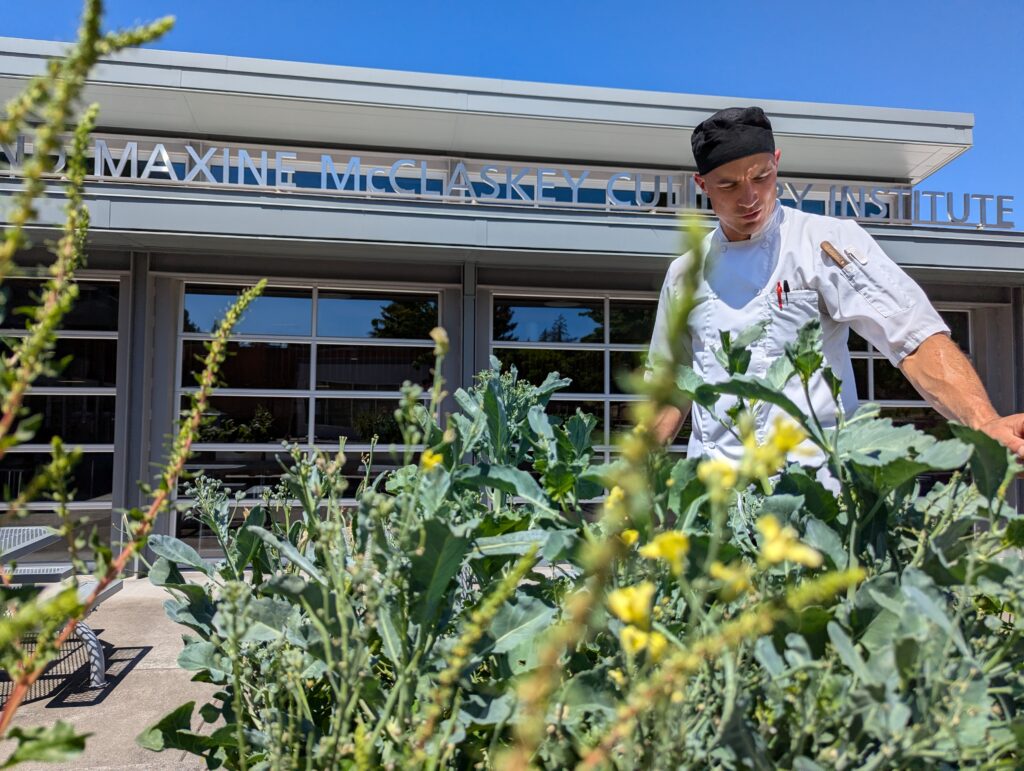
The culinary garden at Clark College is seeking volunteers who enjoy gardening and can volunteer even an hour a week.
On a warm July afternoon, James “Sonny” Demartini, a cuisine instructor at Clark College, spread the broad leaves of a kohlrabi plant to examine a purple turnip-looking vegetable growing at ground level to determine when it would be ready to harvest (pictured below). Pointing to yellow marigold flowers planted nearby, he explained that the flower’s strong scent repels flies, aphids, and other insects that eat the plants.
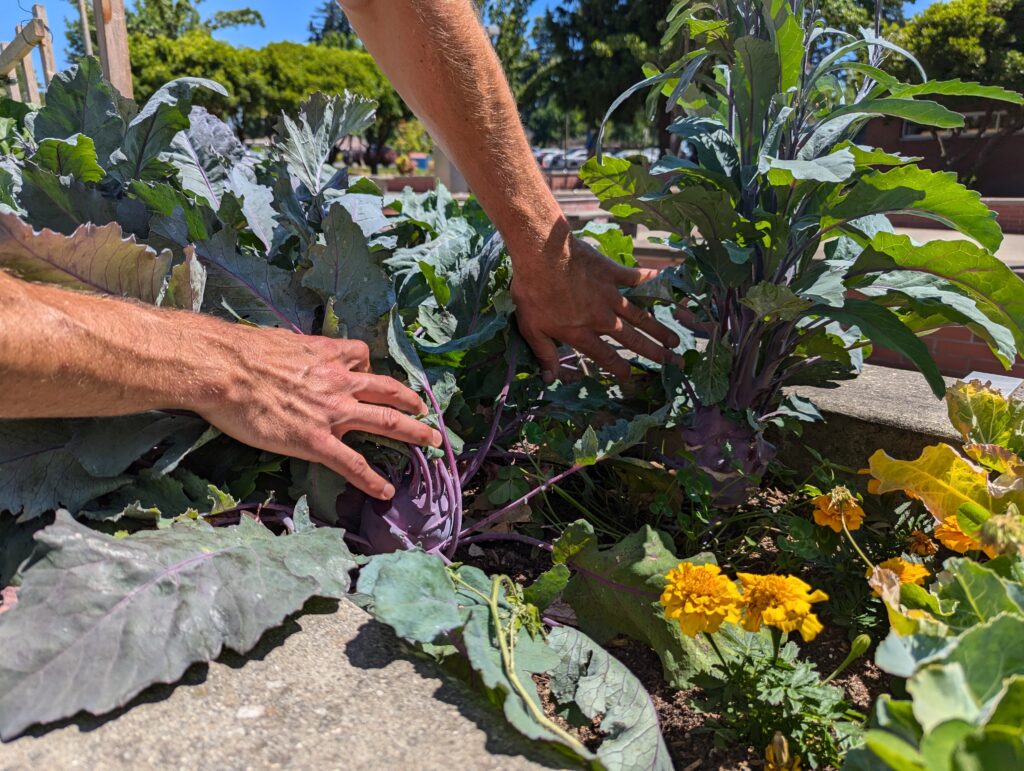
Then he tore the tip of a green leaf from a Florentino cauliflower, popped it into his mouth, chewed, and smiled.
“What flavor! That’s what I’m talking about!” he exclaimed.
Chef Demartini was instrumental in creating the culinary garden just outside the college’s Tod and Maxine McClaskey Institute. Now in its third year, the garden is prolific. During the summer, culinary students harvest herbs, vegetables, and fruit from the garden and use the produce in their cuisine and baking classes to create food for the college community. On this day, students harvested lemon verbena from the garden and added it to the panna cotta dessert served in the student-run restaurant.
In addition to kohlrabi, fennel bulb, Swiss chard, baby carrots, leeks, and a variety of edible flowers are ready to harvest. At this time of year, when the garden is prolific, Chef Demartini says the culinary garden could use more hands to help with weeding and watering.
“We could use more volunteers,” he said. “Even if someone can volunteer for an hour or two a week, that would be helpful.”
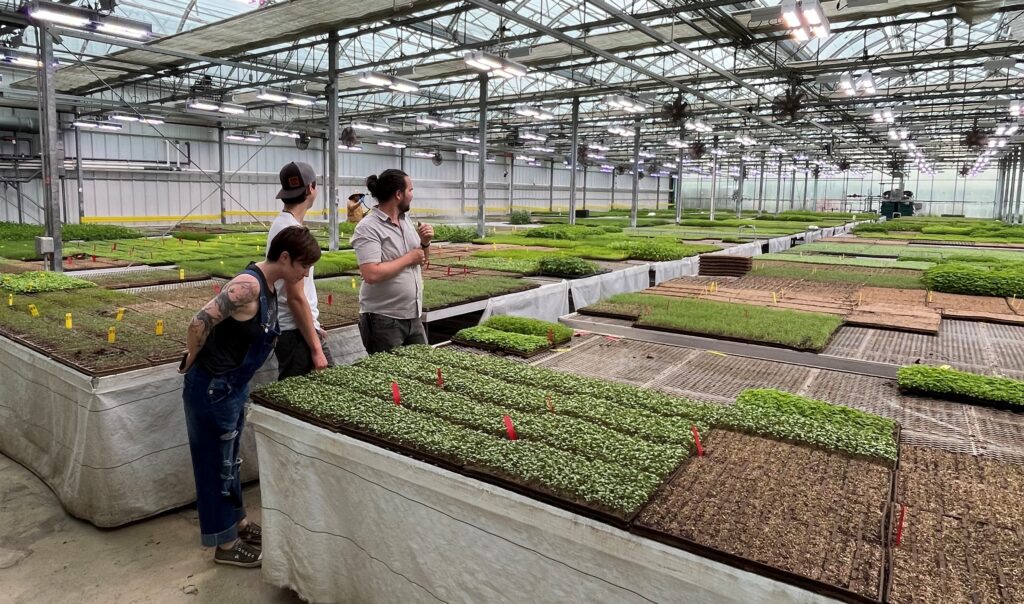
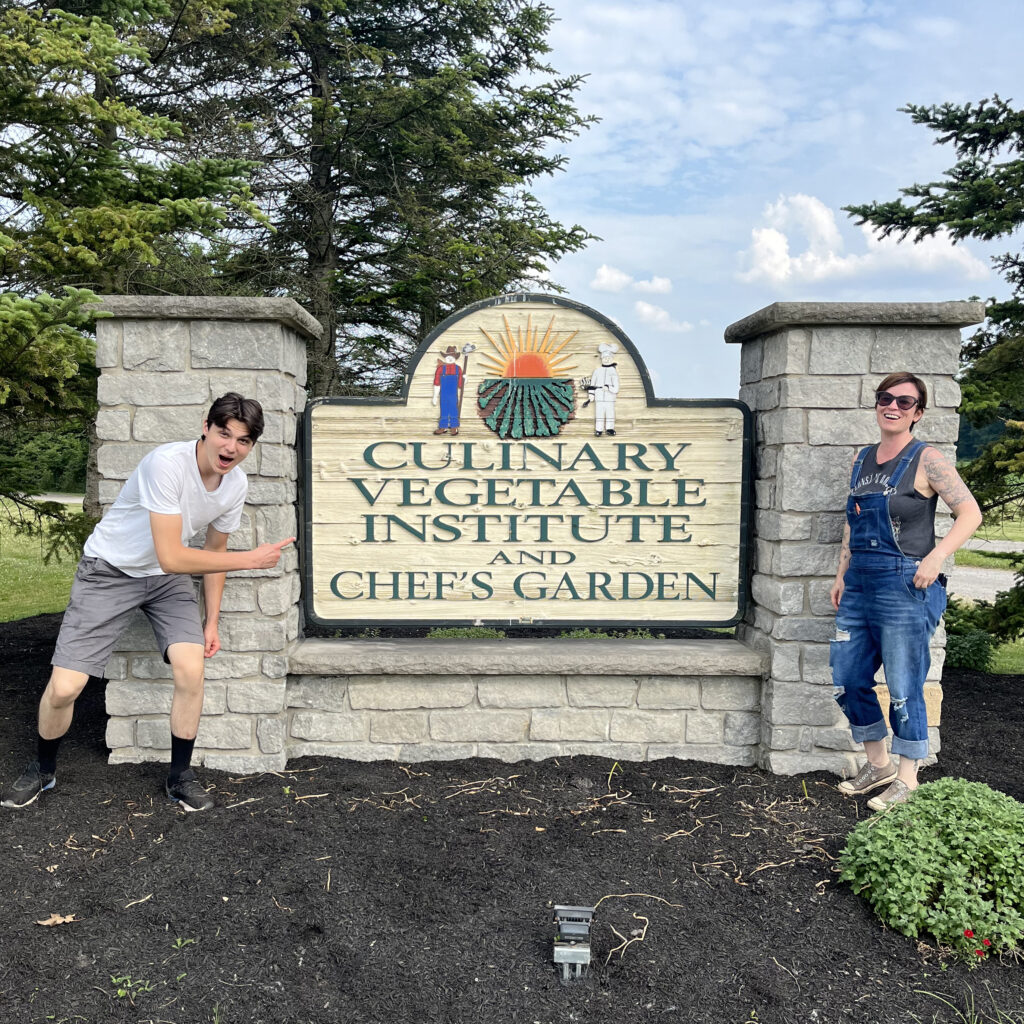
Inspired by Ohio garden
In creating Clark’s culinary garden, Chef Demartini was inspired by Chef’s Garden and its Culinary Vegetable Institute, a 300-acre family farm in Huron, Ohio. He first visited the farm 14 years ago when he was a culinary student. He and two recent Clark Cuisine graduates, James and Amanda, had the opportunity to tour the farm June 17-19. They toured enormous greenhouses growing microgreens and experimental herbs, and they enjoyed tasting the farm’s bounty. They also volunteered in the farm’s test kitchen and prepared food for the farm’s workers and for a wedding event.
Chef Demartini experienced a full-circle moment when his mentor and old friend, farmer Lee Jones, came by to say hello, wearing his trademark denim overalls and red bowtie. The Jones family represents four generations on the farm.
“It was a prescient moment for me,” said Chef Demartini. “When I was a culinary student, Farmer Lee impressed upon me the importance of ‘taking care of the soil’ and ‘eating with the season.’ My interactions with Farmer Lee shaped who I am now, as both a chef and a person. Fast forward fourteen years, and Farmer Lee is seeing the seeds that he sowed in me, with the next generation of culinarians under my wing. It was an incredible moment!”
What’s planted in Clark’s garden
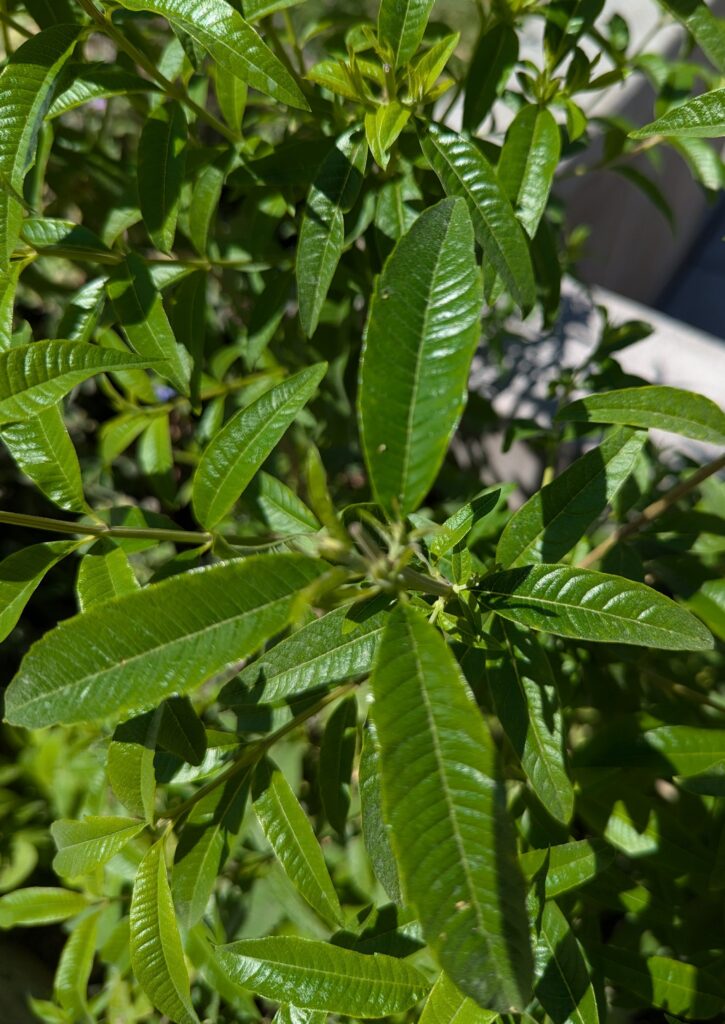
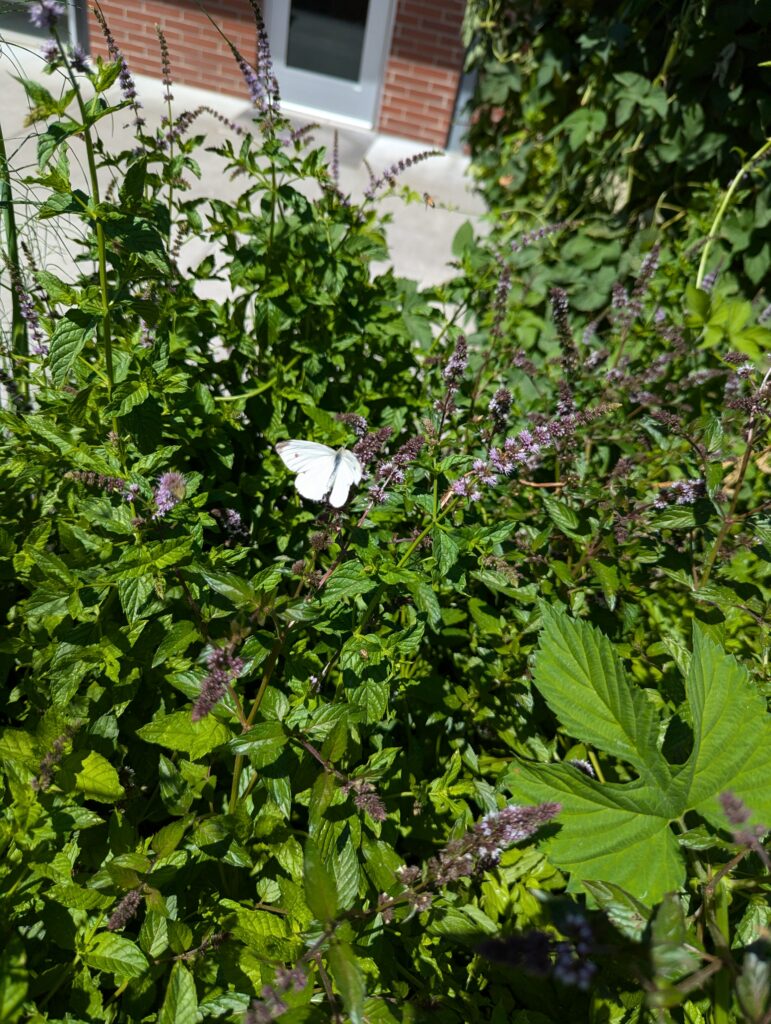
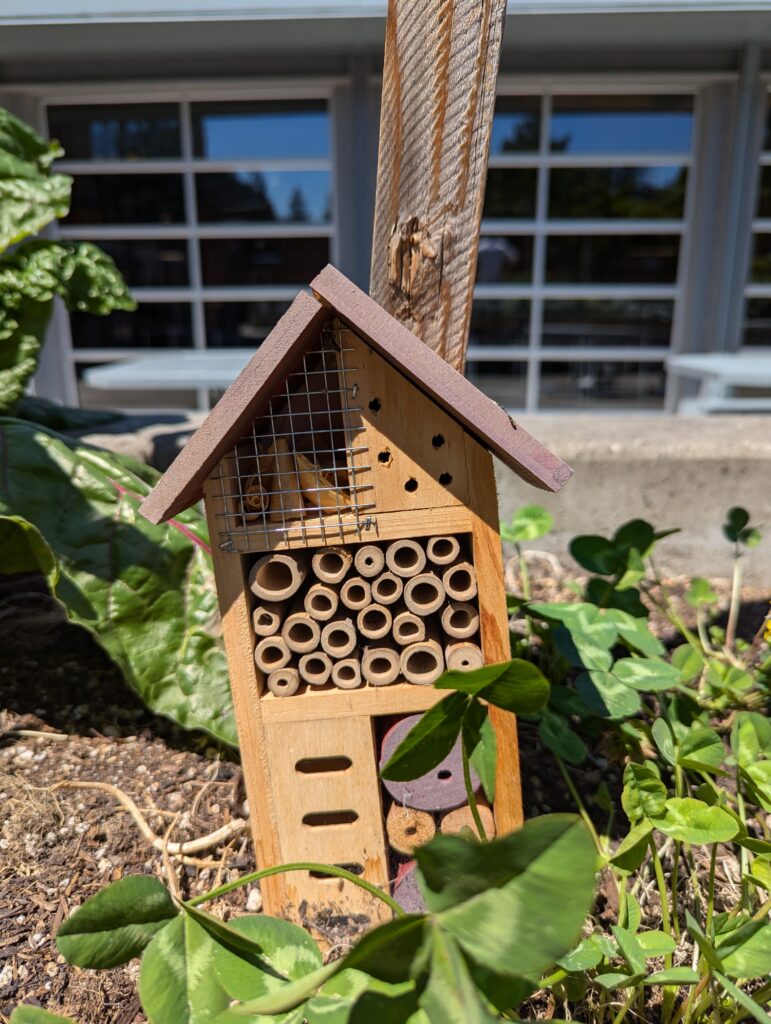
Previously, the concrete planters just outside McClaskey Culinary Institute contained low-maintenance shrubs that didn’t flower or provide food for humans or insects. Three years later, this garden has created a welcoming entrance to Gaiser Hall. People stop to admire the garden.
- Now the concrete planters are bursting with vegetables and fragrant herbs, including sage, lemon verbena, mint, rosemary, sorrel, lovage, parsley, and chives. Bees, butterflies, and other pollinators flit from flower to flower collecting nectar and pollen.
- Edible wildflowers do double duty by attracting pollinators.
- Trellises support grapevines and hops.
- Fruit trees include plum, quince, fig, and five varieties of espalier apple and pear trees.
- A dozen varieties of sunflowers provide edible petals and seeds for recipes.
- Nasturtiums provide edible petals, garnish, and an infusion for oils and vinegars.
The seeds of Clark’s culinary garden
- The culinary space at Clark College was renovated in 2017 with a grant from the Tod and Maxine McClaskey Foundation. Although blueprints included culinary gardens wrapping around three sides of the building, there was no funding for a garden.
- Chef Demartini, a lifelong gardener, and Fay Shorten, a stockroom attendant in the college’s food services department, were determined that a lack of funding would not become a barrier for creating a kitchen garden for their students.
- They spent about $8,000 in grant money. Galvanized stock tanks were repurposed into raised beds. Some plants and seeds were donated, but they purchased others.
- Demartini, Shorten and volunteers cleared unused space outside the building and created gardens including herbs, vegetables, berries, and fruit trees.
- The college’s grounds crew revamped an existing irrigation system.
- Composting organic kitchen scraps: Every day the culinary classes create a mountain of food scraps—from eggshells to carrot tops. Instead of throwing them into the garbage, all organic food scraps are converted into nutrient-rich compost. Demartini converted an industrial woodchipper into a mulcher that chops food waste into rich, organic matter that immediately can be added to the soil.
- Volunteers help amend the soil, plant, weed, water, and harvest—but more volunteers are needed.
Volunteer in the culinary garden
- Monday through Thursday, 8 a.m. to 10 a.m.
- Monday through Thursday, 1 p.m. to 3 p.m.
- Contact: Chef Sonny Demartini at jdemartini@clark.edu
Photos: Clark College/Susan Parrish












